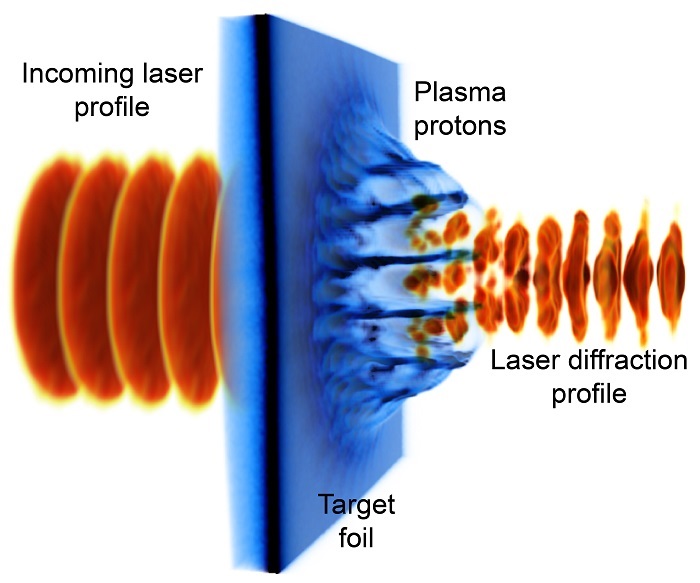14 September 2016
The discovery could have a major impact on advancing smaller, cheaper, laser-driven particle accelerators and their potential applications.
By using the diffraction of intense laser light as it passes through a self-generated ‘relativistically transparent’ aperture in an expanding thin foil target, the researchers demonstrated that they can manipulate the strong electrostatic fields responsible for ion acceleration.
Professor Paul McKenna, of Strathclyde’s Department of Physics, leads the project. He said: “Compact laser-driven particle accelerators have many potential applications in science, industry and medicine. Controlling the collective motion of plasma electrons and ions displaced by intense laser fields is key to the development of these promising sources.
“Our discovery that the diffraction of intense laser light as it passes through an ultra-thin foil strongly influences the formation of electrostatic fields opens up a potential new route to controlling laser-driven ion sources.”
The findings of the research, published in the journal Nature Communications, demonstrate that the collective motion of electrons and ions – the constituents of plasma - can be controlled by variation of the near-field, or Fresnel, diffraction pattern of intense laser light as it passes through the aperture. It is shown that by varying the polarisation of the laser light, the profile of the beam of accelerated protons can be manipulated.
The study involves researchers at Strathclyde, the Central Laser Facility, Queen’s University Belfast, the University of York and the Centro de Laseres Pulsados, Salamanca.
The research is supported by EPSRC funding and was performed using the Gemini laser at the STFC’s Central Laser Facility, at the Rutherford Appleton Laboratory. Simulations were carried out using the ARCHIE-WeSt (University of Strathclyde) and ARCHER (Edinburgh) high performance computers.













